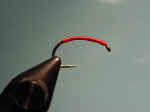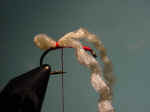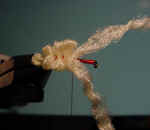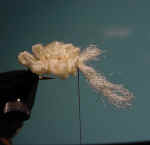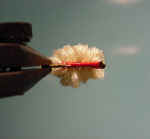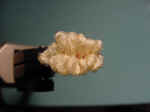|
Fly of the Month Bob Ireton brings together his experience in fly fishing, aquatic entomology, and knowledge of fly tying techniques and materials, to design and tie durable and effective flies. |

|
![]()
Volume 2, Issue 10
October 2001
![]()
Sucker Spawn
By Bob Ireton
Photography by Bob Kimsey and Bob Ireton
The 'Sucker Spawn' fly is an imitation of the spawn of a sucker. There are many species of suckers in our streams, rivers, and lakes, and when these fish spawn, the other fish in these bodies of water will consume this spawn. I have had success using this pattern throughout the fishing year!
When most people think of the sucker spawn fly, they usually think of fishing for steelhead or salmon. This fly falls into the same category of flies as egg patterns. Both are very good patterns for catching steelhead and salmon. But don't limit your use of these flies to just steelhead and salmon! I have used the 'spawn' to successfully catch not only steelhead, but also several species of trout, sunfish, largemouth bass, smallmouth bass, rockbass, and oh yes, sucker!
Fish this pattern with weight approximately 8-10" above fly, and under a strike indicator. Fish dead drift straight up, or up and across.
This is a good pattern to have in your fly box!
MATERIALS
Hook- TMC 2457, Dai-Rikki 135, Daiichi 1150 Size 6-14. For steelhead, I suggest size 10. Adjust size for other species.
Thread- Red; 3/0 or Big Fly"B" for base 6/0 for rest of fly
Body- Sucker Spawn Yarn; divide multiply yarn into single strands. Colors; white, cream, yellow, cheese, green.
TYING STEPS
![]()
Copyright © 1998 - thisyear The Buckeye United Fly Fishers, Inc. Cincinnati, OH 45242
The Buckeye United Fly Fishers, Inc is a non-profit corporation organized under section 501(c)(3) of the Internal Revenue Code, incorporated in the State of Ohio for the preservation, conservation and wise use of our fishing waters and game fish; and to assist in the protection and improvement of our natural resources
